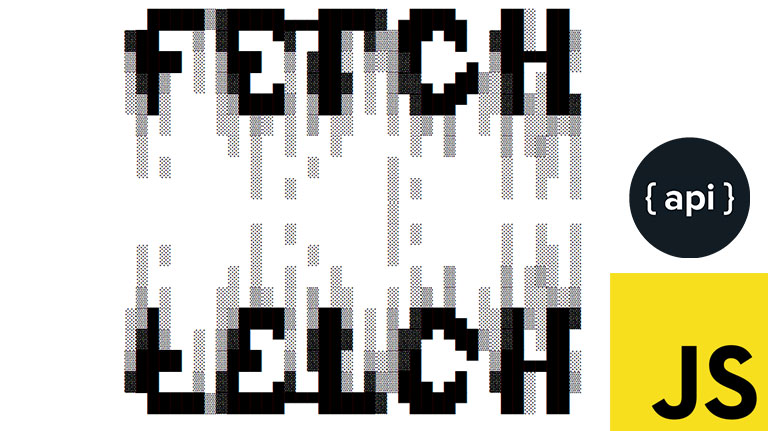Hi, I’m Guillermo Antony Cava Nunez, every morning I check content to improve on my work flow, either adopt new tech or stay away. Recently while making a dashboard I noticed that I haven’t made much use of the javascript fetch api, and well this documentation made my life easier, hope you guys benefit!
Guillermo Cava Nuñez
Guillermo Antony Cava Nuñez
Guillermo Cava Nunez
Guillermo Antony Cava Nunez
Guillermo Cava
This documents the polyfillable parts of the WHATWG Fetch standard. See Caveats for notable exceptions.
Usage synopsis (use the argument links to find out more):
fetch(url, options).then(function(response) {
// handle HTTP response
}, function(error) {
// handle network error
})
More comprehensive usage example:
fetch(url, {
method: "POST",
body: JSON.stringify(data),
headers: {
"Content-Type": "application/json"
},
credentials: "same-origin"
}).then(function(response) {
response.status //=> number 100–599
response.statusText //=> String
response.headers //=> Headers
response.url //=> String
return response.text()
}, function(error) {
error.message //=> String
})
Request
Synopsis: new Request(url, options)
Request represents a HTTP request to be performed via fetch(). Typically a Request doesn’t need to be constructed manually, as it’s instantiated internally when fetch() is called.
URL (Request or string)
The URL of the resource which is being fetched. Typically this is an absolute URL without the host component, e.g. "/path". If the URL has the host of another site, the request is performed in accordance to CORS.
Any non-Request object will be converted to a String, making it possible to pass an instance of URL, for example.
A request can be initialized using another instance of Request in place of the URL. In that case, the URL and other options are inherited from the provided Request object.
Options
method(String) – HTTP request method. Default:"GET"body(String, body types) – HTTP request bodyheaders(Object, Headers) – Default:{}credentials(String) – Authentication credentials mode. Default:"omit""omit"– don’t include authentication credentials (e.g. cookies) in the request"same-origin"– include credentials in requests to the same site"include"– include credentials in requests to all sites
Body types
| Class | Default Content-Type |
|---|---|
| String | text/plain;charset=UTF-8 |
| URLSearchParams | application/x-www-form-urlencoded;charset=UTF-8 |
| FormData | multipart/form-data |
| Blob | inherited from the blob.type property |
| ArrayBuffer | |
| TypedArray | |
| DataView |
Other data structures need to be encoded beforehand as one of the above types. For instance, JSON.stringify(data) can be used to serialize a data structure into a JSON string.
Note that HTTP servers often require that requests that are posted with a body also specify their type via a Content-Type request header.
Response
Response represents a HTTP response from the server. Typically a Response is not constructed manually, but is available as argument to the resolved promise callback.
Properties
status(number) – HTTP response code in the 100–599 rangestatusText(String) – Status text as reported by the server, e.g. “Unauthorized”ok(boolean) – True ifstatusis HTTP 2xxheaders(Headers)url(String)
Body methods
Each of the methods to access the response body returns a Promise that will be resolved when the associated data type is ready.
text()– yields the response text as Stringjson()– yields the result ofJSON.parse(responseText)blob()– yields a BlobarrayBuffer()– yields an ArrayBufferformData()– yields FormData that can be forwarded to another request
Other response methods
clone()Response.error()Response.redirect()
Headers
Synopsis: new Headers(hash)
Headers represents a set of request/response HTTP headers. It allows for case-insensitive lookup of header by name, as well as merging multiple values of a single header.
Methods
has(name)(boolean)get(name)(String)set(name, value)append(name, value)delete(name)forEach(function(value, name){ ... }, [thisContext])
Error
If there is a network error or another reason why the HTTP request couldn’t be fulfilled, the fetch() promise will be rejected with a reference to that error.
Note that the promise won’t be rejected in case of HTTP 4xx or 5xx server responses. The promise will be resolved just as it would be for HTTP 2xx. Inspect the response.status number within the resolved callback to add conditional handling of server errors to your code.
fetch(...).then(function(response) {
if (response.ok) {
return response
} else {
var error = new Error(response.statusText)
error.response = response
throw error
}
}
Caveats
The whatwg-fetch polyfill isn’t able nor does it aim to implement the entire WHATWG Fetch standard, since some of the standard features would be non-trivial or otherwise unfeasible to implement. Notable examples include:
- Inability to set the redirect mode
- Inability to change the cache directive
- Inability to disable same-origin cookies

